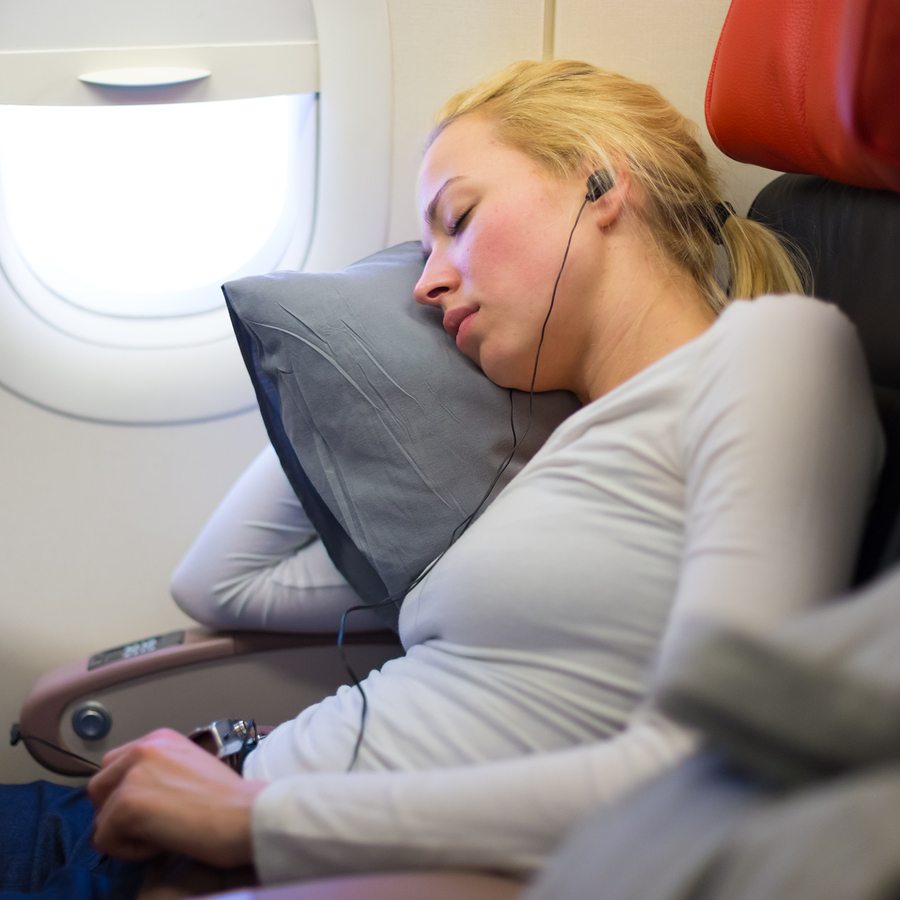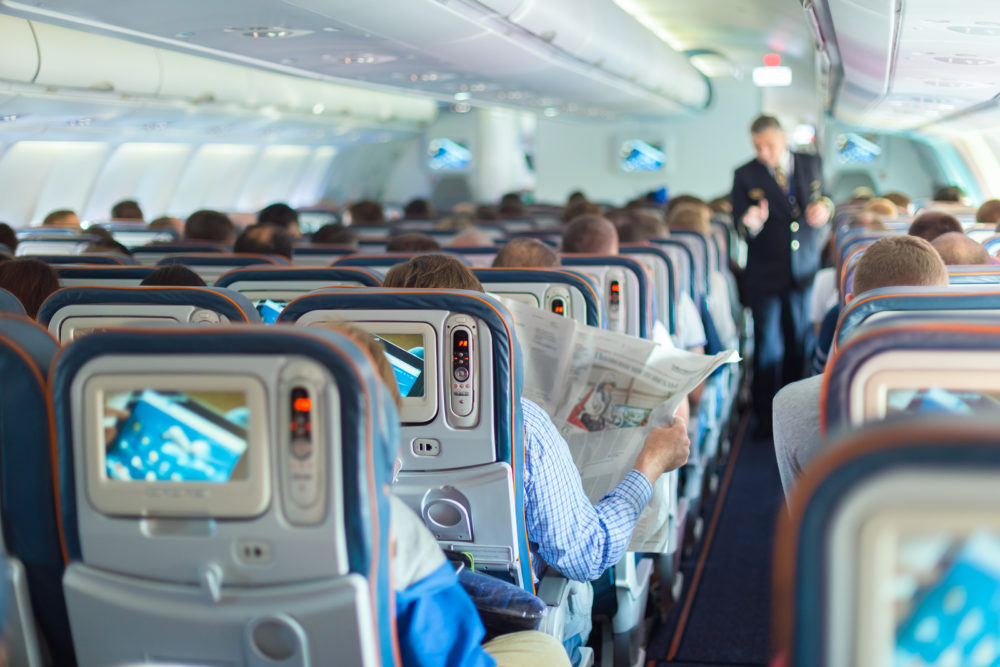Long flights can also be dangerous to one’s health because the tight quarters can lead to muscle cramps and, in rare situations, serious problems. According to WebMD, it’s not really a healthy environment. Leslie Kaminoff, a yoga therapist and breathing specialist in New York, pointed out that the pressure in an airplane cabin at cruising altitude may make passengers feel like they are at about 8,000 feet, as though they were high up in the mountains.
“Just sitting and breathing in that environment is a challenge to the system,” Kaminoff says. “People don’t realize they’re at 8,000 feet of pressure and breathing is more labored. In the cabin, there’s less available oxygen in the air. This puts an added load on the system, which is trying to get the required amount of oxygen into the bloodstream.” Another factor which may disturb breathing is the air’s diminished humidity, which is generally below 25 percent, in contrast to a comfortable home environment where the humidity level is at about 35 percent.
 The online source notes another risk during air travel: developing leg clots or deep vein thrombosis. It’s also known as “economy-class syndrome” — a condition often brought about during long flights. Periods of immobility increase the risk of this condition because sitting and leg room are cramped.
The online source notes another risk during air travel: developing leg clots or deep vein thrombosis. It’s also known as “economy-class syndrome” — a condition often brought about during long flights. Periods of immobility increase the risk of this condition because sitting and leg room are cramped.
“You want to create a situation where your legs are moving and the muscles are contracting,” says Kaminoff. “The deep veins in your legs have one-way valves, where blood can only move toward the heart. The only thing that gets that venous blood from the lower body back up to the heart is muscle contraction.”
As a spine surgeon at the Texas Back Institute, I’ve been lucky enough to speak at medical conventions all over the world. Recently, I’ve had some long trips to Uganda, China and Singapore.
Since the crew knows I’m a doctor, I get called on when there is any type of medical “emergency.” One instance involved a Chinese general surgeon who was up in first class and had a little too much to drink. He was really alright, just over-served. There was another time when a lady who was waiting in line for the restroom passed out in my lap. There are some medical issues, but mainly it has involved more minor situations on planes.
“Another factor which may disturb breathing is the air’s diminished humidity, which is generally below 25 percent, in contrast to a comfortable home environment where the humidity level is at about 35 percent”
There are several start-up companies which are targeting the frequent flyers like myself with new products that offer an alternative to the old standby of leaning back in one’s seat and hoping for the best.
I have used the neck pillows. That’s about it. I’ve heard of some of these new products and would like to try them out. I’ve also had the occasional fluffy seat mate who leans on me, and I just use them for a pillow! They’re usually very friendly!
There’s a new product which has recently started a Kickstarter campaign to raise funds for a self-inflating pillow. This is then placed on the tray in front of the passenger and allows them to lean forward and take a nap.
I think that it’s probably comfortable. It’s going to put you in a forward-flex posture, but that’s not as bad as tilting your neck to the side or leaning back in a seat that doesn’t recline enough. I think the forward-leaning pillow might be quite comfortable.
That’s actually how my son sleeps on a plane. He’ll lay his face right on his lap. Only problem occurs when the person in front of him puts his seat back. Then he’s pinned!
You have to take advantage of the little space you do have and keep yourself moving. Don’t just get stuck in one place. Don’t let yourself get blood-clots, which is the worst thing that could happen on a plane.
I will rotate my shoulders regularly while in flight. Even if my rear end is still, I try to keep my back stretched out. I will keep my legs moving with my calves pumping up and down. I will also change the position of my feet frequently. All of these things can help. They will help you feel refreshed when you get off the plane.
In most planes, the air is very dry. So keeping yourself hydrated is important. There are a few planes, the new 787 is one, which humidify the air, so it’s not as bad as it would normally be. However, most planes don’t do this, and they have very dry air. This will have the effect of pulling moisture out of your body, and it is important to keep replenishing that. A glass of water every couple of hours is very important.
Whether you are taking a train, plane or automobile, if you are experiencing back pain, contact Dr. Michael Hisey or any other of the spine specialists at the Texas Back Institute in Plano, Texas by calling 800.247.2225. For more information visit www.texasback.com.







Recent Comments